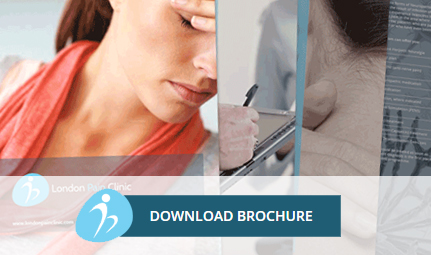As our Pain Doctors regularly explain to patients: “chronic prostatitis/chronic pelvic pain syndrome (CP/CPPS) is ongoing pain in the area of the prostate gland. CP/CPPS is the most common types of prostatitis. The prostate gland is part of the reproductive system for men. It sits just below the bladder and around the urethra. The urethra is the tube that takes urine and semen out of the body. Symptoms such as pain and trouble urinating may come and go” [1]
The Frequently Under-Diagnosis & Mismanagement of Prostatitis & Pelvic Pain
Did you know that these disorders are “the third most commonly diagnosed urological disease in men” [1]? And that when it comes to males under the age of 50, this issues are classed as “the most common urological pathology in this demographic” [1]. Moreover, the fact of the matter, is that with regard to clinical practice, long-term prostatitis presents an enormous challenge as it is categorised into:
- Acute bacterial prostatitis, and
- Various long-term types such as: idiopathic, histological, infectious, and inflammatory prostatitis [1]
So this is why it is essential to ensure that you are given an accurate diagnosis by a Pain Doctor. Once your medical history and symptoms are reviewed and the proper diagnosis is attained, your Pain Consultant (who you can link up with either online or in-person), will provide you with a Holistic Personalised Treatment Plan that you can get started on right away. This is likely to include multifaceted treatment which incorporates both conventional and the latest cutting-edge therapies and injectables.
Prostatitis & Pelvic Pain Treatment at the London Pain Clinic
Your Pain Specialist may recommend one or more of the following, and your personalised treatment protocol will be modified inline with your response and progress, thus empowering you to get back to optimum health and living as soon as possible.
Antibiotics
- Muscle-relaxing and/or anti-inflammatory pharmaceuticals
- Alpha-blocker pharmaceuticals (which work relax the muscles both in and around the prostate gland)
- Specialised physical therapy focusing on the pelvic floor muscles
- State-of-the-art pain blockers (a nerve block is an anaesthetic and/or anti-inflammatory injection which is geared towards a particular group of nerves or single nerve in order to negate a patient’s pain. The goal of a pain block is to either (a): “switch off ” a pain signal which is being generated from a precise location in the body. Or (b): to reduce the level of inflammation within that region)
- Trigger point injections (these are extremely helpful if the pain is localised to a single muscle or muscle group). Your Pain Doctor will explain more about the procedure/s you are having (in layman’s terms) when they discuss your Personalised Treatment Plan.
- Botox injections
- Advice on dietary changes
Prostatitis & Pelvic Pain Symptoms to Report to Your Pain Consultant
These include:
- Pain in the pelvic area and genitals
- Having difficulty passing water
- Experiencing pain whilst urinating
- Feeling pain during or post-ejaculation
Note: as our Pain Doctors regularly witness, some CP/CPPS patients do not have symptoms. Moreover, some patients may have symptoms that come and go. To that end, it is a good idea to start a ‘Pain & Symptom Dairy.’ This should have daily pages with hourly slots. Be sure to write down as much information as possible (such as what you were doing at the time, how long it lasted, and what you were doing when the pain/symptom ceased). This level of detail will be very helpful to your Pain Specialist.
Reference
Pendegast HJ, Leslie SW, Rosario DJ. Chronic Prostatitis and Chronic Pelvic Pain Syndrome in Men. [Updated 2024 Jan 11]. In: StatPearls [Internet]. Treasure Island (FL): StatPearls Publishing; 2025 Jan-. AS cited by the NIH.
https://www.ncbi.nlm.nih.gov/books/NBK599550/



